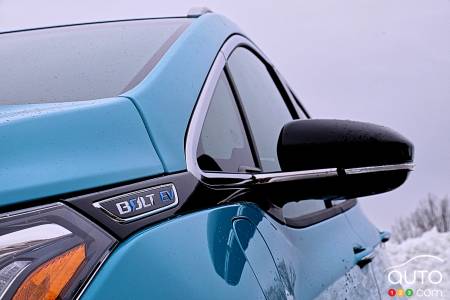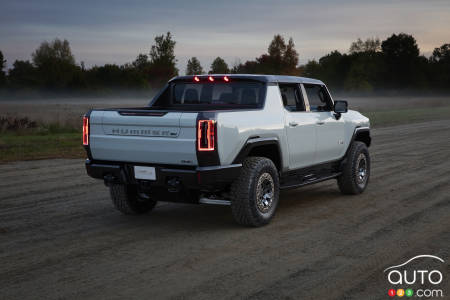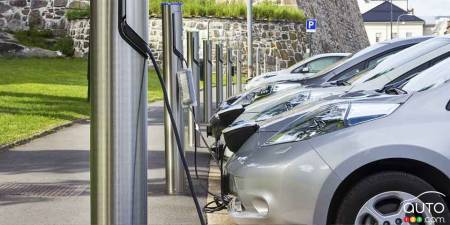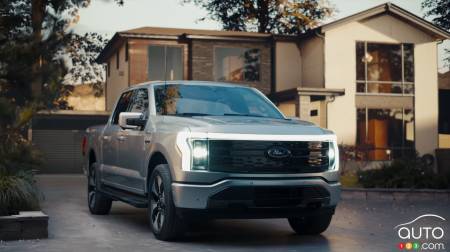• The increasing demand for electricity to charge EVs will challenge power suppliers in Canada.
• It could overmatch even the best-equipped power company in Canada, a new study concludes.
• Hydro-Quebec remains confident power-savings and increased energy efficiency will prevent any shortfall in capacity.
The growth in the number and size of EVs on Quebec roads will have to be addressed by the province’s electricity provider. This is the conclusion of a new study carried out by an intern at the Chair in Transportation Transformation of École Polytechnique/Université de Montréal, as reported initially by Radio-Canada.
The study's author was blunt about its findings:
“The transition (to electrification) is coming and changes will have to be made, otherwise it won’t be successful. Clearly, we can't continue with the current status quo, because the electrical system will not be able to withstand the change.”
- Simon Brassard, intern at the Chair in Transportation Transformation Université de Montréal/Polytechnique, speaking to Radio-Canada
Browse cars for sale available near you

According to calculations made by Brassard and his supervising professor, researcher Normand Mousseau, Hydro-Quebec might not have the capacity to supply power to the five million cars and trucks currently in service in the province of Quebec if they were all-electric. The shortage is not at the level of supply of electricity as such, but more on the public utility company’s capacity to provide that electricity to all those who need it.
The current capacity of Hydro-Quebec supply network is 37 gigawatts (GW), and the limits of that capacity are already being attained on certain days when demand is particularly high.
The study’s calculations show that, during a typical winter, the company would need a capacity of 3.65 GW to feed the total fleet of vehicles currently in use in Quebec, if they were all electric. What that means is that on high-demand days, the grid could be 10-percent short of the capacity needed to meet that demand.
More and heavier vehicles, more and heavier EVs
The study’s author also points out that it’s expected the number of total vehicles in circulation will continue to rise in the coming few years, making the potential shortfall even greater. What’s more, the study only counts passenger vehicles, not other types of vehicles that will be increasingly electrified in the coming years, such as buses and transport trucks.
The phenomenon of peak usage times is also expected to create periods of higher demand that cause Hydro-Quebec to fell even farther short of the needed capacity, most notably at dinnertime when motorists return home and plug in their vehicle for the evening or for the night.

Last but not least, the study’s author factored in the increasing weight of many EVs now coming to market. We reported recently on the safety risks posed by large EVs like the GMC Hummer and the Ford F-150 Lightning truck, but these bigger and heavier vehicles will also exacerbate the risk to the power supply if Hydro-Quebec relies on its current capacity.
But even in the case of smaller vehicles, electric versions of existing ICE models are heavier than their traditional counterparts (which themselves are getting heavier by the year). The study cites a few examples, but we’ll use the one of the Hyundai Kona: the regular model weighs 1,457 kg, while the Kona Electric weighs 1,661 kg. Now multiply that 1,200+-kg difference by the number of vehicles currently on the road, and the scope of the problem comes into focus.

Hydro-Quebec confident
The utility company says it’s confident that it can handle what it acknowledges will be increased pressure on its power grid and capacity to deliver electricity. Its forecast calls for electrical demand overall in the province to increase by about 25 terawatts/hour and 4 GW of power by 2032. Of that 4 GW, Hydro-Quebec expect 1.8 GW of extra demand to come from owners of electric vehicles.
Still, the company says it “does not anticipate, for now, a problem” in regard to capacity. One reason it gives is that the percentage of EVs is rising but gradually, so the switch won’t be instantaneous. Via power-savings and increased energy efficiency, the company believes it can meet the additional demand as it comes.
Will that be enough to handle the coming jump in demand for electricity, in the province with the largest electrical capacity, we should add? Time will tell…


